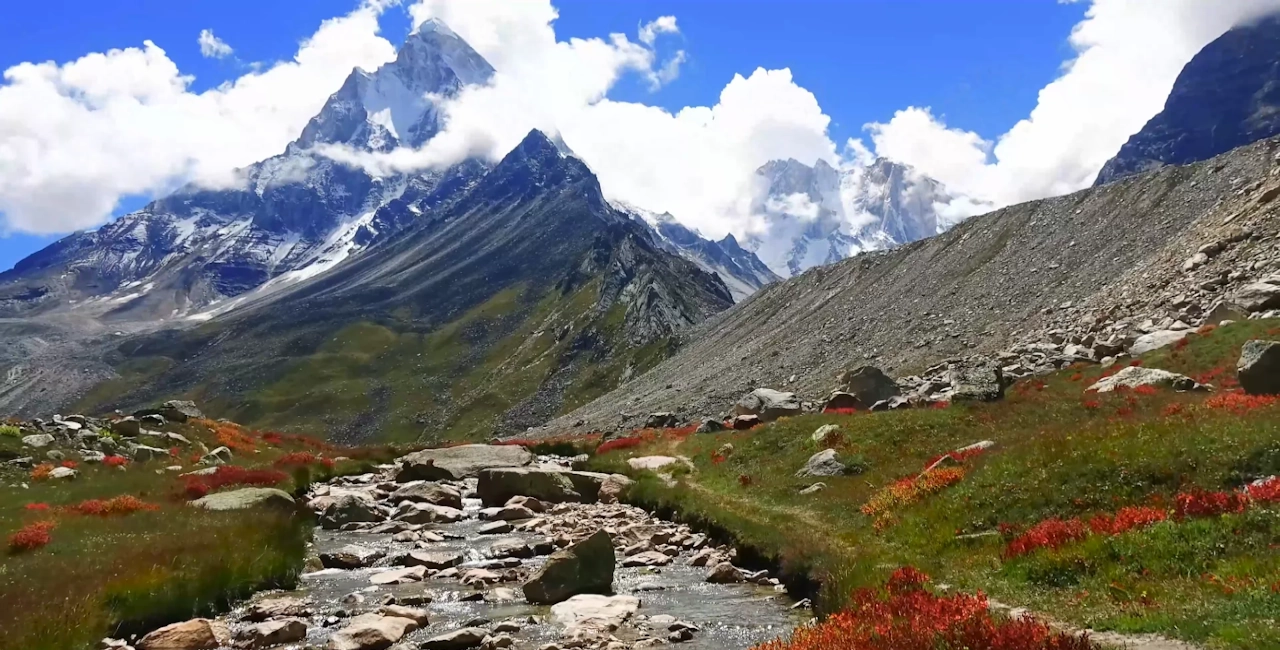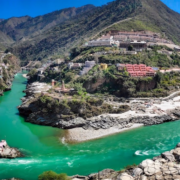
Gangotri: The Spiritual Gateway to the Ganges
Nestled amidst the majestic Himalayas in the state of Uttarakhand, Gangotri is one of the most sacred pilgrimage sites in India. It holds immense religious significance, being the origin of the holy River Ganges, and is one of the Char Dhams (four sacred temples) that every devout Hindu aspires to visit. Situated at an altitude of 3,415 meters (11,204 feet) above sea level, Gangotri is not just a place of religious reverence but also a region of immense natural beauty and tranquility, drawing visitors for both spiritual and nature experiences.
Mythological Significance
Gangotri is steeped in mythology, primarily revolving around the River Ganga, which is revered as the goddess Ganga in Hinduism. According to legend, King Bhagirath, an ancestor of Lord Rama, meditated for centuries to please Lord Shiva and bring the river down to earth to purify the ashes of his ancestors. It is believed that Goddess Ganga descended from the heavens in the form of a river, and Lord Shiva caught her in his locks to reduce the force of her descent, preventing destruction. This celestial river then flowed from Shiva’s locks at Gangotri, which became the spiritual point where devotees gather to pay homage.
This belief makes Gangotri one of the holiest spots in India, where pilgrims come to offer prayers, take a dip in the icy waters, and perform rituals for their ancestors’ souls to attain salvation.
The Sacred Gangotri Temple
The primary attraction in Gangotri is the Gangotri Temple, dedicated to Goddess Ganga. Built by the Gurkha General Amar Singh Thapa in the 18th century, the temple stands amidst snow-capped peaks and towering deodar trees, creating a serene yet imposing atmosphere. The temple’s architecture is relatively simple, reflecting the spiritual austerity of the place, but its significance lies in the ancient rituals performed here.
The temple is open to devotees from May to October, as the harsh winter weather makes the region inaccessible for several months. During the winter, the idol of Goddess Ganga is moved to the village of Mukhba, where she is worshiped until the temple reopens the following season.
Pilgrims visit the temple to offer prayers, seek blessings, and witness the Ganga Aarti, a spiritual ceremony where lamps are lit, and hymns are sung in honor of the river. It is believed that a single visit to the temple and a dip in the river can wash away one’s sins and lead to spiritual cleansing.
The Origin of the River Ganges: Gaumukh Glacier
Although Gangotri is associated with the origin of the River Ganges, the actual source is the Gaumukh Glacier, located around 19 kilometers from the town of Gangotri. Gaumukh, meaning “cow’s mouth,” is named after its shape, resembling a cow’s snout from which the river is believed to flow.
The trek to Gaumukh is a journey filled with adventure and breathtaking scenery. The path winds through dense forests, rugged terrains, and glacier moraines. Trekkers encounter panoramic views of the surrounding peaks, including the Bhagirathi peaks, which tower above the glacier.
While challenging, the trek is spiritually uplifting, as pilgrims believe that witnessing the source of the river is a sacred experience. The waters at Gaumukh are crystal clear, and many devotees collect it for its perceived purity and sanctity.
Natural Beauty and Adventure
Gangotri is not only a religious destination but also a paradise for nature lovers and adventurers. The entire region is a part of the Gangotri National Park, a protected area known for its rich biodiversity. The park is home to rare and endangered species such as the snow leopard, Himalayan tahr, and musk deer. The lush forests, alpine meadows, and cascading waterfalls offer a haven for trekkers and wildlife enthusiasts.
For those seeking adventure, Gangotri is a gateway to several high-altitude treks, including the Tapovan Trek and Nandanvan Trek, which take explorers to stunning landscapes filled with glaciers, rivers, and towering peaks. These treks offer the opportunity to connect with nature and experience the untouched beauty of the Himalayas.
Best Time to Visit Gangotri
The best time to visit Gangotri is during the summer months of May to June and post-monsoon from September to October. During this period, the weather is pleasant, with clear skies and comfortable temperatures, making it ideal for pilgrimage and trekking. The region is closed during winter due to heavy snowfall, and visitors should avoid the monsoon season (July to August), as the area is prone to landslides.
Conclusion
Gangotri is a unique blend of spirituality, mythology, and natural grandeur. For devotees, it offers an unparalleled opportunity to connect with the divine, while for adventurers, it presents a chance to explore the remote beauty of the Himalayas. Whether seeking spiritual solace or an adventure in the wilderness, Gangotri leaves an indelible mark on those who make the journey.
Recent Posts
Exploring Pangot: A Tranquil Bird Watcher’s Paradise in Uttarakhand
Devprayag: The Sacred Confluence of Rivers and Cultures
Rudraprayag: A Confluence of Spirituality and Natural Beauty
All Categories

Thailand




